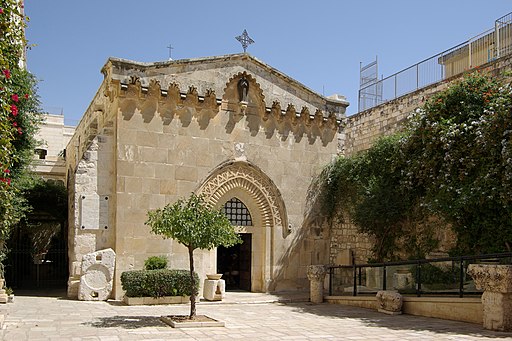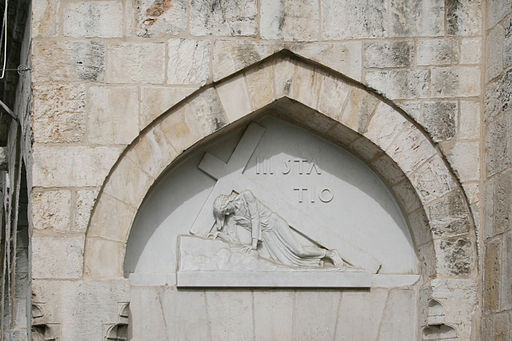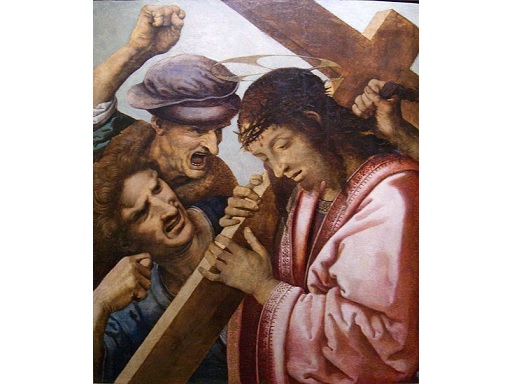Via Dolorosa is the last path that Jesus Christ walked on his way to his crucifixion. Being 600 meters long (2000 ft.), this path includes 14 stations – each station signifying one of the final events in the life of Christ.
Here you will find everything you need to know before visiting this holy site!
- Why is Via Dolorosa important?
- Where is Via Dolorosa located?
- What are the main Christian attractions in Via Dolorosa?
- What should I know before visiting Via Dolorosa?
- Are there any fun facts about Via Dolorosa?
Why is Via Dolorosa important?
Via Dolorosa, known as Sorrowful Way or Way of Suffering, is the last path that Jesus Christ walked on his way to his crucifixion.
Sentenced to die on the cross by the Romans, Jesus went through 14 stations until he was finally crucified. These stations along the path signify events that are mentioned in the New Testament, and have become cornerstones of Christian faith.

Where is Via Dolorosa located?
Via Dolorosa is located inside the Old City of Jerusalem.
What are the main Christian attractions in Via Dolorosa?
The main Christian attractions in Via Dolorosa are the 14 stations along the route – 9 of them are marked by the nine Stations of the Cross, and the remaining 5 stations are inside the Church of the Holy Sepulchre.
Trial by Pilate: stations one and two
On the site are three early 19th-century Roman Catholic churches, taking their names from the events: the Church of the Condemnation and Imposition of the Cross, the Church of the Flagellation, and the Church of Ecce Homo.
The three falls: stations three, seven, and nine
The first fall is represented by the current third station, located at the west end of the eastern fraction of the Via Dolorosa, adjacent to the 19th-century Polish Catholic Chapel.
The second fall is represented by the current seventh station, located at a major crossroad junction, adjacent to a Franciscan chapel. The remains of a tetrapylon, which marked this Roman junction, can be seen in the lower level of the Franciscan chapel.
The third fall is represented by the current ninth station, which is not actually located on the Via Dolorosa, but is instead located at the entrance to the Ethiopian Orthodox Monastery and the Coptic Orthodox Monastery of Saint Anthony.

Four encounters: stations four, five, six and eight
The first encounter is with Mary, Jesus’ mother. It is commemorated by a 19th-century Armenian Catholic oratory at the location of the encounter.
The second encounter is with Simon of Cyrene. Here, Simon of Cyrene encountered Jesus, and may have carried the cross for him. The current traditional site for the station is located at the east end of the western fraction of the Via Dolorosa, adjacent to the Chapel of Simon of Cyrene, a Franciscan construction built in 1895.
The third encounter is with Saint Veronica. She wiped the sweat from the face of Jesus with a piece of cloth, that has been imprinted with Jesus’ image by the physical contact with Jesus’ face. The encounter is commemorated by the Church of the Holy Face and Saint Veronica, but is not generally open to the public.
The fourth encounter is when Jesus encounters pious women on his journey, and is able to stop and give a sermon. The present eighth station is adjacent to the Greek Orthodox Monastery of Saint Charalampus; it is marked by the word Nika (a Greek word meaning Victory) carved into the wall, and an embossed cross.
What should I know before visiting Via Dolorosa?
As in every sacred place, modest dress is required for entrance to the churches.
Each Friday, a Roman Catholic procession walks the Via Dolorosa route, starting out at the monastic complex by the first station; the procession is organized by the Franciscans of this monastery, who also lead the procession.
Acted re-enactments also regularly take place on the route, ranging from amateur productions with, for example, soldiers wearing plastic helmets and vivid red polyester wraps, to more professional drama with historically accurate clothing and props.
For more information about Jesus in the Holy Land check out this amazing book on Amazon: 
Are there any fun facts about Via Dolorosa?
Of course!
- The Via Dolorosa is about 600 meters (2,000 feet) long.
- The Via Dolorosa is not one street, but a route consisting of segments of several streets.
- The first reports of a pilgrimage route corresponding to the Biblical events dates from the Byzantine era; during that time, a Holy Thursday procession started from the top of the Mount of Olives, stopped in Gethsemane, entered the Old City at the Lions’ Gate, and followed approximately the current route to the Church of the Holy Sepulchre.

